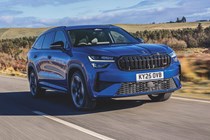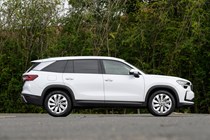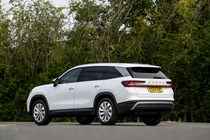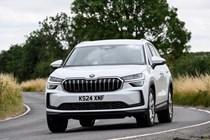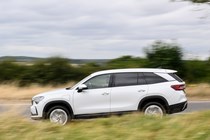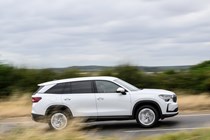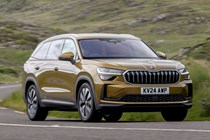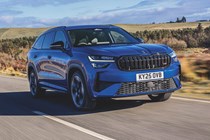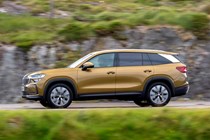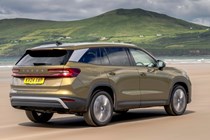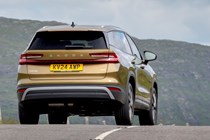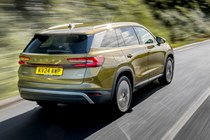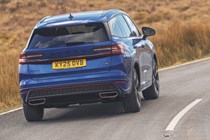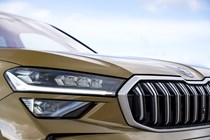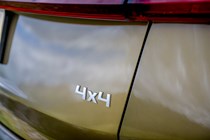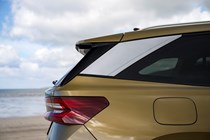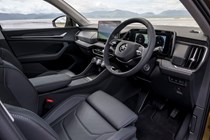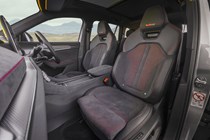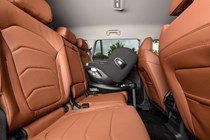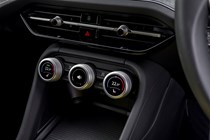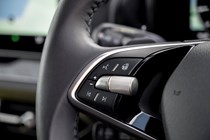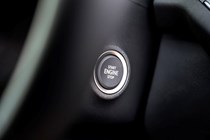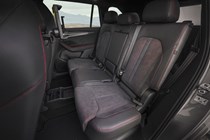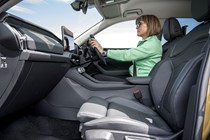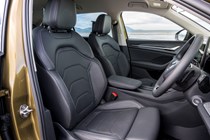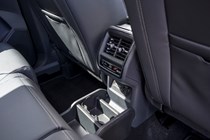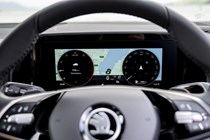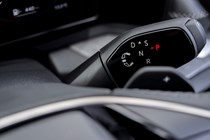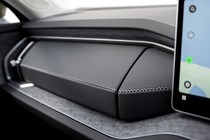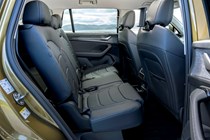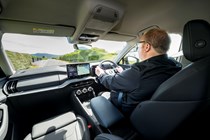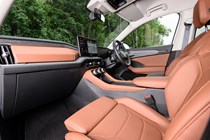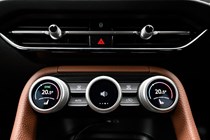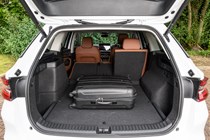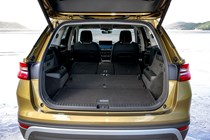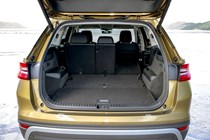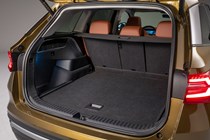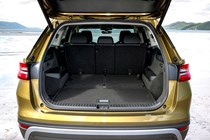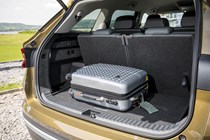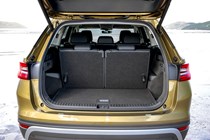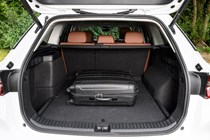
Skoda Kodiaq engines, drive and performance
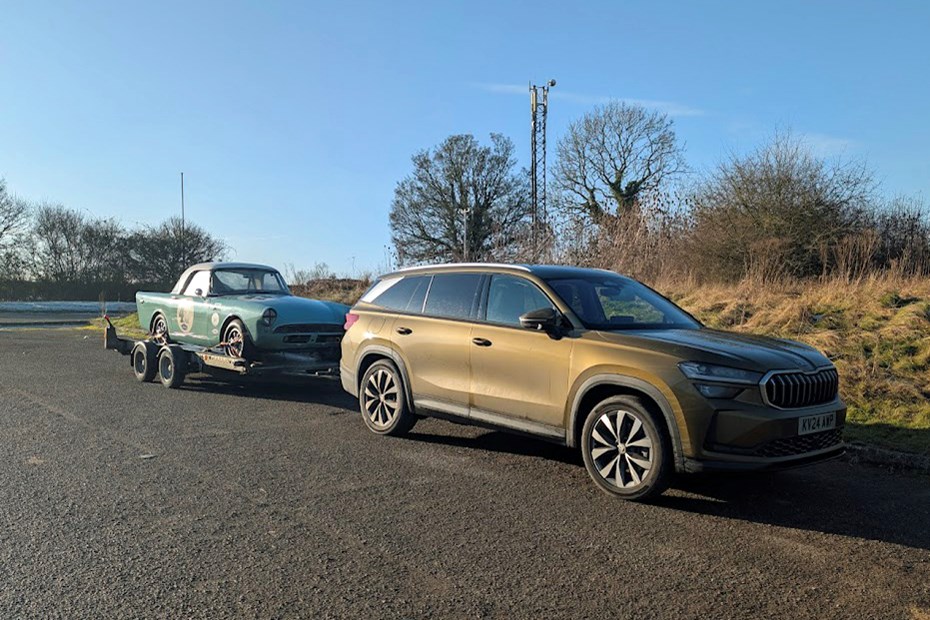
- Petrol, diesel and plug-in hybrid power available
- Reasonably well refined and comfortable
- Accomplished but not exciting to drive
The Skoda Kodiaq comes with a choice of an entry-level 1.5-litre mild hybrid petrol engine, a 2.0-litre petrol, a pair of 2.0-litre diesels, a plug-in hybrid 1.5-litre petrol or a more powerful 2.0-litre petrol that’s exclusively fitted to the vRS model. All come with a DSG automatic transmission as standard; there is no manual gearbox version of the second-generation Kodiaq.
Skoda Kodiaq petrol engines
The entry-level 1.5-litre TSI e-Tech turbo-petrol engine produces 150hp and 250Nm of torque (pulling power). The e-Tech part of is name indicated its introduction of fuel-saving mild-hybrid technology to the Kodiaq – a useful add-on for this model that we’ll cover in more detail on the next page of this review. As long as you’re not in too much of a hurry, performance is respectable, with 0-62mph taking just under 10 seconds.
If you regularly travel fully loaded with people and luggage, however, you may find the 1.5-litre a little under-endowed. It’s a good choice if you do a lot of short hops around town, however, and lightly loaded and driven sympathetically it can achieve very good fuel economy on longer journeys.
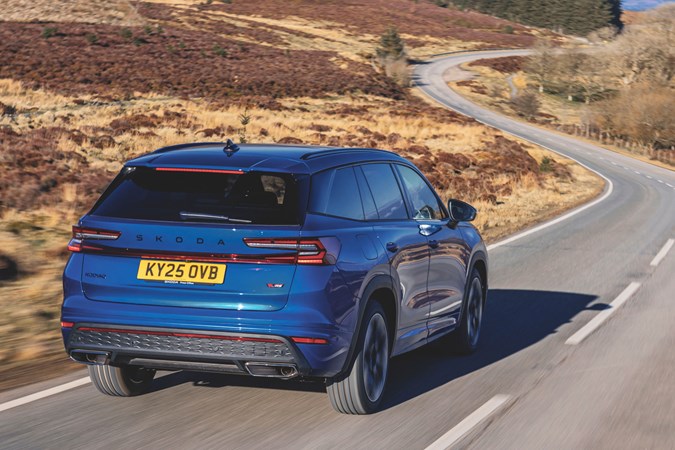
At the opposite end of the range, the most recently introduced version is the Skoda Kodiaq vRS, the performance flagship. This is powered by a 2.0-litre TSI turbo petrol engine with 265hp and 400Nm of torque. Enough to drag this hefty SUV 0-62mph in 6.4 seconds. There’s no mild-hybrid tech here, and with such keen pace it’s the least efficient Kodiaq by some margin. An artificial engine sound generator aims to add to the fun, but if you find this annoying – and ultimately, we did – you can switch it off.
We’ll get on to what the vRS is like to drive further down this page, but one other thing worth noting here is that it has the highest towing rating of any current Kodiaq. Paired with four-wheel drive as standard it’s capable of towing up to 2,500kg with a braked trailer. It will drink plenty of fuel in the process, though…
In between the two petrol extremes is a 204hp 2.0-litre TSI turbo petrol with 320Nm. This is also four-wheel drive as standard, tows up to 2,350kg and does 0-62mph in 7.5 seconds. If you’re dead-set against diesel and need seven seats (which you can’t have with the plug-in hybrid), this is perhaps the best all-rounder.
Skoda Kodiaq diesel engines
We’re pleased to see Skoda still offers diesel power in the Kodiaq. Capable of impressive fuel economy – even when towing, as you can read about on our Kodiaq long-term test page – and with plenty of low-down torque that makes for a relaxing drive, this increasingly untrendy fuel still suits this kind of vehicle. If you are going to make maximum use of all the seats and the boot, or regularly do lengthy journeys, we would recommend you still seriously consider a Kodiaq TDI.

The Volkswagen Group’s widely used 2.0-litre TDI diesel engine comes in two outputs here: 150hp with 360Nm of torque or 193hp with 400Nm of torque. It takes 9.8 seconds to go 0-62mph in the less powerful version, falling to 8.0 seconds with the punchier motor; the latter also get four-wheel drive as standard while the former is front-wheel drive only. As such the 193hp Kodiaq TDI is a great tow car, capable of pulling up 2,400kg (the 150hp TDI will tow 2,000kg).
These engines can be a little noisy when accelerating hard, and the gearbox tuning is economically minded in the normal Drive setting, which makes them seem a little lazy at first. But put your foot down or switch to Sport and they offer plenty of performance. In fact, we’d say go for the 193hp model above any other Kodiaq unless you mostly do short journeys – modern diesels aren’t at their most efficient on shorter trips and using them in this way can cause problems with particulate filters over time.
Skoda Kodiaq plug-in hybrid
The final engine option in the Kodiaq line-up is a plug-in hybrid electric vehicle (PHEV). Badged 1.5 TSI iV, this combines a 1.5-litre turbo petrol with an electric motor to provide 204hp and over 70 miles of electric-only driving range. It’ll do 0-62mph in 8.2 seconds and, depending on the kind of driving you do, offers the potential for super-low running costs.
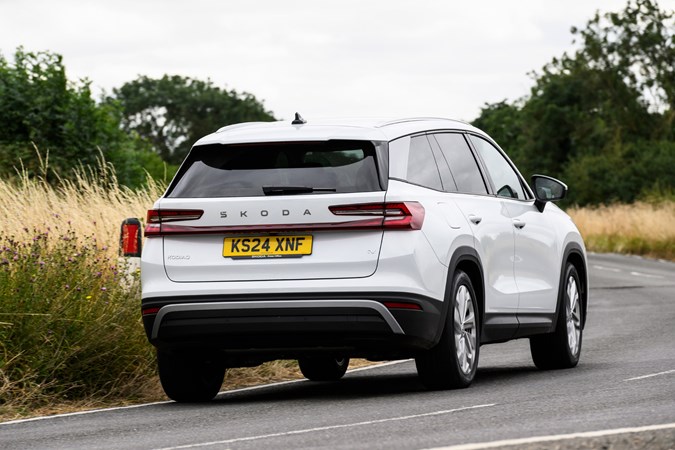
Using a six-speed DSG automatic instead of the seven-speed unit employed by other Kodiaqs, it weirdly never feels particularly sprightly yet can struggle for grip if you accelerate hard from a standstill. That said, the transition between petrol and electric power is smooth enough, and it’s good to see Skoda giving buyers this option. For mixed use – short journeys around town backed up by petrol power for longer trips – a PHEV can be an excellent choice.
What’s it like to drive?
- Plenty of grip and well controlled in the corners
- Ride is well judged but not as soft as some rivals
- Sporty vRS flagship isn’t actually that sporty at all
As family-friendly transport, the Kodiaq is more of a cruiser than an exciting driving experience, providing good body control in combination with reasonably high comfort levels. Even the larger alloy wheels manage to avoid completely disrupting the ride, and you don’t need to fork out an extra £1,000 for the Dynamic Chassis Control (DCC) adaptive suspension to get a well-balanced machine. Though this does allow you to tailor things a little more it doesn’t make a night and day difference.
A Hyundai Santa Fe is a slightly softer-feeling car overall, but that doesn’t necessarily mean it’s more comfortable. While some of the Parkers team prefer this quality to the Kodiaq, others found it too floaty and preferred the Skoda’s sense of control.
Considering the sheer size of this Skoda, it does a remarkable job of avoiding feeling clumsy or overly hefty. The steering is quite quick, making the Kodiaq seem nimble, and it successfully takes the edge off the nasty lumps and bumps around town without resulting in a chassis that goes to pieces as soon as you point it down an open road and try to go a bit faster. In fact, it’s very accomplished in both environments, with plenty of grip and not too much rolling around in the turns.
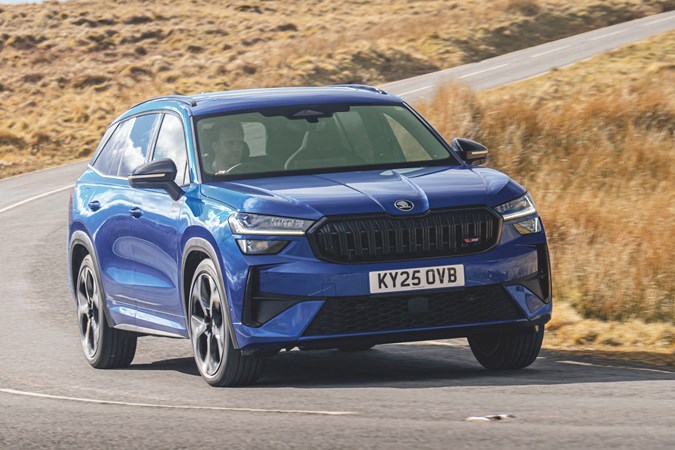
The more powerful petrol and diesel engines give you plenty of speed on the motorway, too, and although you can sometimes hear these when accelerating hard, the Kodiaq is otherwise very refined, with little wind or road noise in the cabin. There’s even an Acoustic Package that uses special glass to isolate you further from the outside world, but this doesn’t feel like a must have here and is probably money better spent elsewhere.
Frankly, we have the same perspective on the Kodiaq vRS model. Unless you really must have the sportiest badge and fastest possible acceleration, there’s really not much extra reason to go for the vRS over the (similar looking) Sportline variants. It’s grippy and well poised for something so big, but so is the rest of the range, and honestly the 265hp petrol engine didn’t feel much quicker than our 193hp SE L turbodiesel long-term test car when we drove them back-to-back.
Given the Kodiaq’s general demeanour and likely passengers, this is a car rightly suited to a steadier pace and it excels in this manner. So pick the engine you need rather than the one you desire is our advice.


